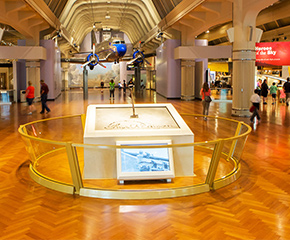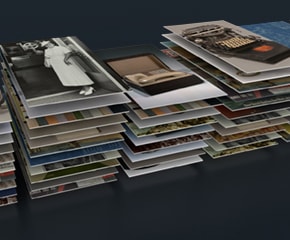Ediphone, Model E, 1912-1914
Add to SetSummary
Dictaphones and Ediphones were sound recording devices used for efficient oral dictation in business settings. When Edison invented the phonograph, one proposed use was "dictation without the aid of stenographers." Its tinfoil playback medium lacked quality, however. Alexander Graham Bell's Graphophone (later, Dictaphone) improved the phonograph by using wax cylinders for superior playback; cylinders were also used in the competing Ediphone.
Dictaphones and Ediphones were sound recording devices used for efficient oral dictation in business settings. When Edison invented the phonograph, one proposed use was "dictation without the aid of stenographers." Its tinfoil playback medium lacked quality, however. Alexander Graham Bell's Graphophone (later, Dictaphone) improved the phonograph by using wax cylinders for superior playback; cylinders were also used in the competing Ediphone.
Artifact
Dictating machine
Date Made
1912-1914
Location
Not on exhibit to the public.
Object ID
29.2003.3
Credit
From the Collections of The Henry Ford. Gift of Thomas A. Edison, Inc.
Material
Wax
Nickel (Metal)
Plastic
Textile
Steel (Alloy)
Dimensions
Height: 12 in
Width: 9.5 in
Length: 13 in
Weight: 45 lbs
Inscriptions
top, plaque: Edison Dictating Machine Type __ Model E Manufactured under the patents of Thomas A. Edison and Others at Orange, N.J., U.S.A. Nov. 17 1903 . . . .Nov. 8 1910 Serial No. 26836 [licensing information] cylinder: Edison Super SafeTAE Cloth Lined Pat'd Made in U.S.A. Set Here [arrow] top: Thomas A. Edison Trade Mark plaque, rear: Underwriters Laboratories, Inc. Inspected Motor Operated Appliance Type A No 4276





